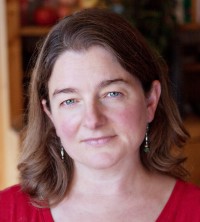Thomas Keating permanently changed the way I pray
Centering prayer persists when I am believing or disbelieving, when I feel “close” to God or far away.

Thomas Keating’s centering prayer movement penetrated my midwestern evangelical world in the mid-1980s. I was a teenager—a serious, anxious, bookish one. I didn’t know the tradition of Christian “contemplation,” but I did know that my father’s job was a difficult one, and that he had been looking for ways to manage his stress. My own prayers consisted of rambling God-directed journal entries and the evangelical practice of stream-of-consciousness verbal group prayer. The idea of silent prayer—or of cultivating inner silence—was not familiar.
One day, my father and I sat in the middle of the living room floor on the carpet. He taught me to pay attention to my breath. “Count to four breathing in,” he said. “Then count to four breathing out. Don’t worry if your mind wanders. Just return to counting: four in. Four out.” We breathed like this for awhile. Then he said, “Now let’s try a focus phrase. Pick something that is short and easy to remember. Something like, ‘Be still and know that I am God,’ or ‘Lord Jesus Christ have mercy on me.’ Keep breathing and repeat this phrase in your mind.” I tried both phrases he suggested and also stumbled around for a moment searching in my mind for something that might be unique. But I settled on, “Be still and know that I am God.” I liked the way that the phrase felt like a light tap on my shoulder, sending me back to earth as my thoughts kept running off.
Even with an inner jumpiness that resisted the stillness, I felt a peace settle into my body. I felt a new gentleness in my thoughts. So began my training in centering prayer, and it was so formative that I have never stopped praying this way. Other forms of prayer have come to the fore and faded over time, but this one has offered steady calm through all the phases of life. Somehow it works when I am believing or disbelieving, when I feel “close” to God or far away, when life is flowing easily and when the waters are impossibly choppy. There is almost never a time when I can’t breathe in four counts and breathe out four counts. The words “Be still and know” remain the focus phrase of choice, and they’ve created a reservoir of ease over time, so that when I return there, something inside my anxious self settles.
When I heard of Thomas Keating’s death at the age of 95 last week, I remembered that day on the living room floor in Sioux Falls, South Dakota, when Keating offered my father and me new ground for prayer. My father emailed me immediately upon hearing of Keating’s death. He hadn’t remembered that day, but he felt the same urge he had felt more than 30 years ago to let me know the powerful effect of Keating’s teaching on his life. “I have been changed by him,” he wrote. So have I.






